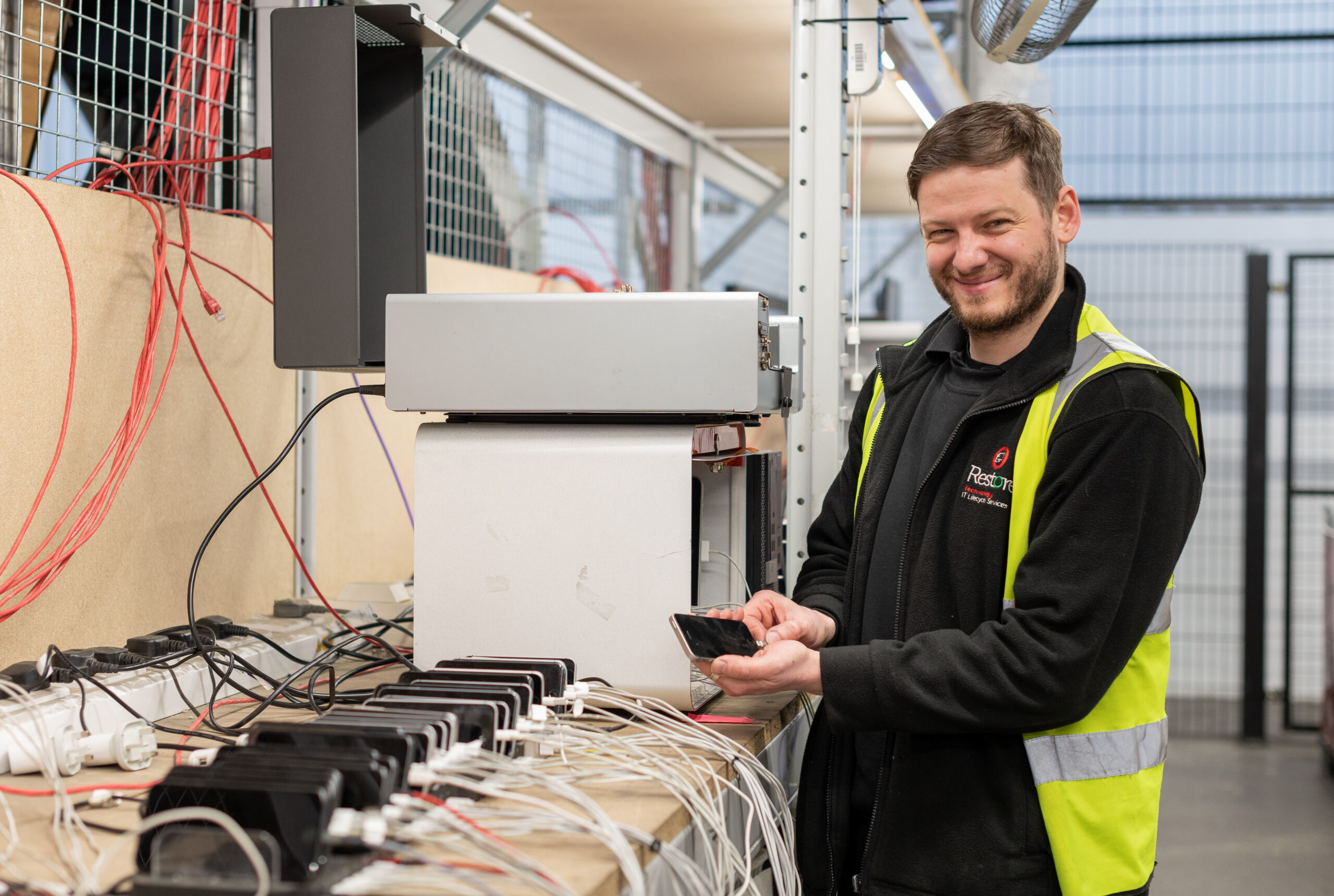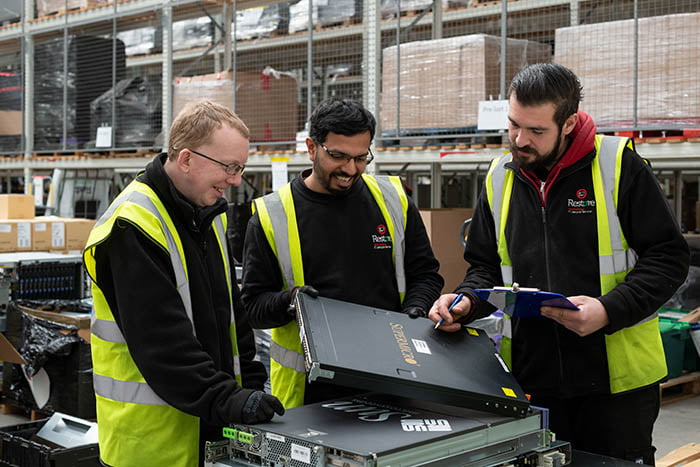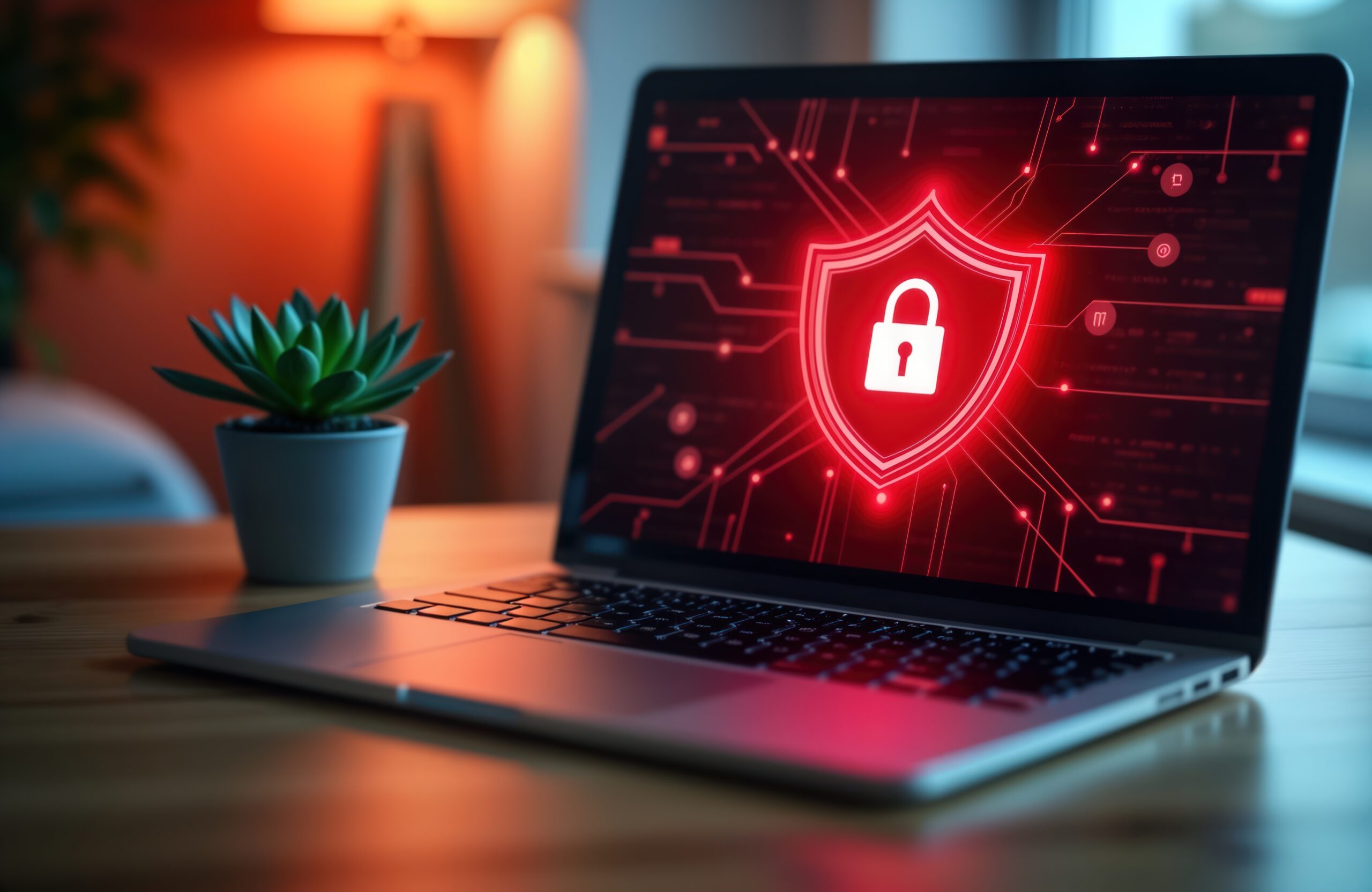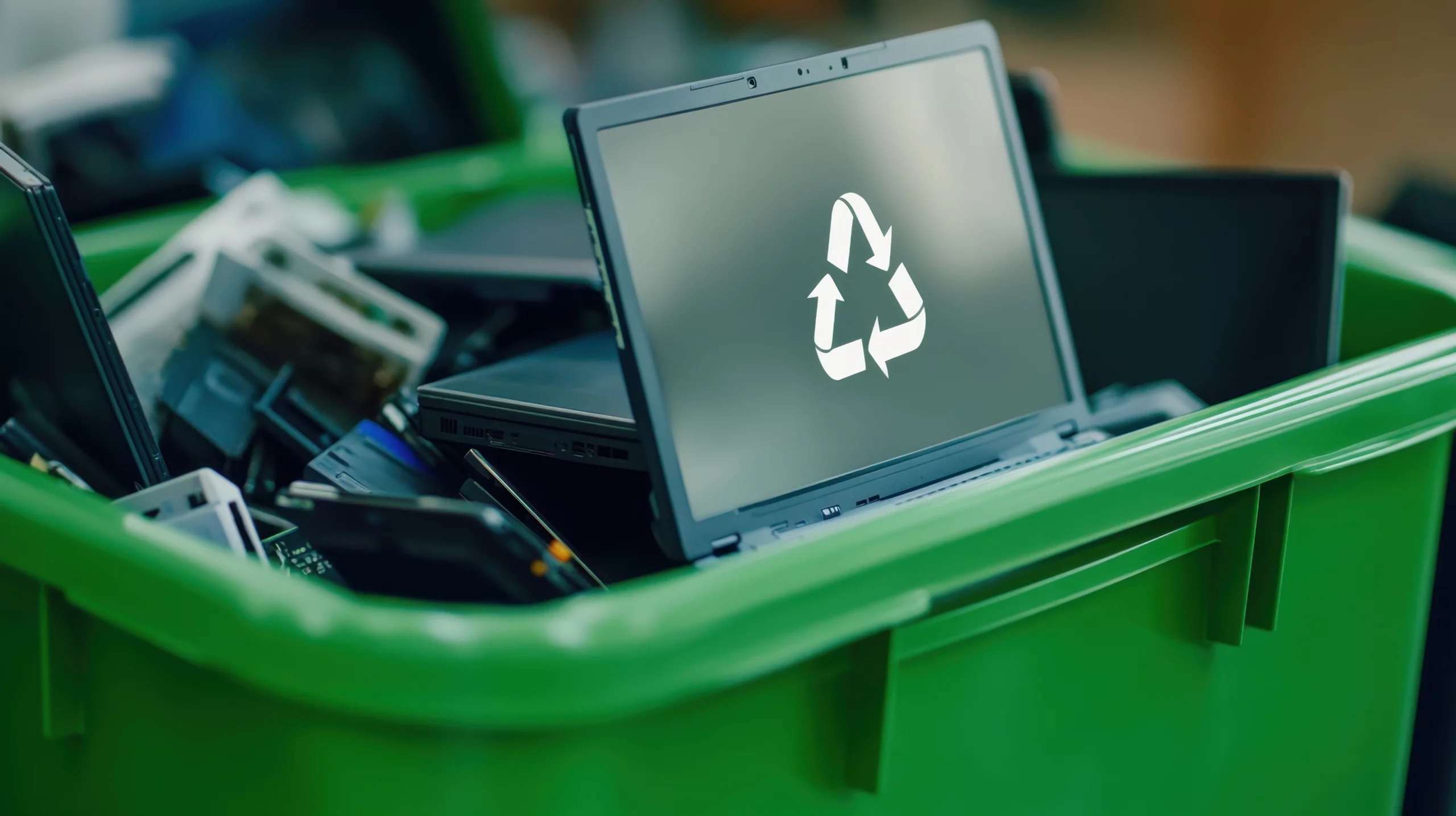Dealing with outdated or redundant equipment is inevitable in running any long-term business.
Although some businesses reach the point where their IT equipment is no longer needed due to an upgrade, relocation, or end-of-life planning, the hardware mustn’t just gather dust in a storage cupboard or, worse, end up being disposed of irresponsibly. That’s where the need for IT equipment decommissioning comes in. When done properly, it protects your data, reduces costs, and helps you adhere to compliance guidelines and environmental responsibilities.

What is IT equipment decommissioning?
Put simply, decommissioning IT equipment refers to the process of retiring IT assets that are no longer required or working properly. It’s the secure process of disconnecting, removing, and safely handling IT hardware, often as part of a wider refresh or move.

This process is typically undertaken during:
- Office relocations (Convenience)
- Technology upgrades (Outdated tech)
- Cloud migrations (Data protection)
- End-of-life hardware replacements (Damaged or withered tech)
- Downsizing or closing of business units
While it might sound simple, the reality is that in practice it can be quite complex – it involves multiple steps, strict security considerations, and clear coordination.
Why is proper IT equipment decommissioning important?
1. Data protection
Hard drives and other storage devices can retain sensitive information long after they've been powered down and forgotten about. If this data isn’t properly destroyed, businesses risk data breaches as well as reputational damage and theft. Secure, certified destruction methods are therefore a must.

2. Regulatory compliance
Businesses must comply with data protection laws such as the UK GDPR. Improper or illegal disposal of IT assets can lead to hefty fines. Following a documented, standards-led approach helps you remain compliant.

3. Cost control
Holding on to unused equipment can become costly, from storage fees and insurance costs to the missed opportunity of asset resale or donation. Proper decommissioning can therefore help you recover the value of your IT assets.

4. Environmental responsibility
Review patching, access controls, antivirus, and unauthorised software

Before diving into the physical removal of hardware, some upfront planning is key. Here’s a breakdown of what to do before the process begins:
Pre-decommissioning IT equipment checklist

Begin with an accurate inventory of all IT equipment. This IT equipment can include items such as desktops, laptops, monitors, servers, switches, and routers. Any storage devices (hard drives, SSDs) and even printers qualify. Use asset tags or your ITAM system to ensure nothing is overlooked.

Whether you’re preparing for an office move or consolidating IT systems, having a clear purpose shapes your approach to decommissioning.

Loop in all and any relevant departments, your IT department, operations, facilities, compliance, finance, and any third-party providers. Clear communication from the start is always paramount.

Set out who’s doing what. Designate a project lead and delegate tasks such as data backup, device collection, and vendor coordination.

Map out key dates and milestones. Align with other business activities to minimise disruption. Document everything in your IT decommissioning plan template.
Best practices for a smooth IT decommissioning process

Before any hardware is decommissioned, data must be safely backed up and verified. Whether you’re transferring to new devices or the cloud, this step is non-negotiable.

Don’t just delete files, use certified processes like:
- Degaussing (neutralising magnetic fields)
- Hard drive shredding (physically destroying drives)
Restore Technology’s hard drive destruction services ensure full compliance and peace of mind. All methods used come with certification, so you have proof for auditors.

Remove decommissioned items from your asset register. Record whether they were destroyed, resold, recycled, or donated. This ties into your IT asset decommissioning process.

Avoid landfills at all costs. Choose certified ITAD partners like Restore Technology that hold accreditations such as:
- ISO 27001 (information security)
- WEEE compliance (waste electronics)
See Restore Technology’s accreditations for a full list of industry standards.

Document the IT decommissioning process with logs, serial numbers, data wipe reports, and certificates of destruction. This helps with internal audits and regulatory reporting.

Environmental impact of IT equipment disposal
Improper IT disposal doesn’t just waste valuable materials; it pollutes our planet. Many devices contain:
- Toxic metals like lead, mercury, and cadmium
- Non-biodegradable plastics
- Energy-intensive components
When dumped in landfills, these materials leak into soil and water systems, contributing to serious health and environmental hazards.

A sustainable decommissioning approach looks like this:
- Refurbishing working devices for resale or donation
- Recycling parts and raw materials with certified processors
- Zero-landfill policies
- Documented carbon reduction strategies
Restore Technology is proud of its ESG commitments and carbon reduction plan, which show how sustainable business can be done right.

Risks of improper decommissioning (and how to avoid them)
1. Data breaches
Simply deleting files is not enough. Without certified data destruction, sensitive information can be recovered from discarded devices.
Mitigation: Use ISO 27001-compliant vendors for secure data destruction.
2. Regulatory penalties
Failing to follow regulations like GDPR or WEEE can result in large fines.
Mitigation: Follow a well-documented IT decommissioning plan template with signed certifications and compliance reporting.

3. Loss of valuable assets
Equipment can be misplaced or stolen during decommissioning without a clear chain of custody.
Mitigation: Track assets through every step of the IT asset decommissioning workflow, using serial numbers and barcoded labels.
4. Environmental damage
Throwing IT equipment in the general waste stream increases e-waste and contributes to environmental degradation.
Mitigation: Work with recyclers that guarantee zero landfill and track the materials reused or repurposed.
Decommissioning IT equipment is more than just unplugging and discarding old machines. It’s a strategic process that demands attention to security, compliance, sustainability, and proper project management.
From the initial decommissioning IT systems checklist to final certification and documentation, the right approach ensures you protect your data, reclaim value from your assets, and do right by the environment. And when in doubt, partnering with professionals like Restore Technology can make the process smooth, secure, and fully accountable.
Ready to Take the Next Step?
Restore Technology offers a full suite of IT lifecycle services, including secure destruction, remarketing and recycling, and compliant disposal processes.
If you’re preparing for a refresh or planning a full decommission, speak to our team today for tailored advice and a free consultation.
